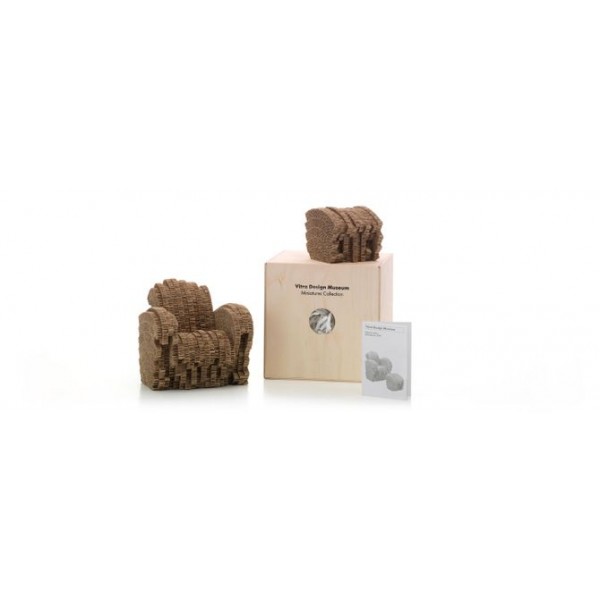

Opis
Meble kartonowe jako niedroga i lekka alternatywa dla tradycyjnych mebli pojawiły się już w latach 60-tych. Większość projektów miała na celu nadanie tekturze niezbędnej stabilności poprzez techniki wkładania i składania. Gehry wybrał inną metodę, która dała początek solidnym meblom z tektury, takim jak rzeźby z tektury: „Pewnego dnia spojrzałem w swoim biurze na stos tektury falistej, materiału, którego zwykle używałem do tworzenia modeli architektonicznych, i zacząłem z nim eksperymentować, sklejać go i przycinać do kształtu za pomocą piły ręcznej i scyzoryka”. Po „Easy Edges” z 1972 roku, serii niezwykle wytrzymałych tekturowych mebli o gładkiej powierzchni, od końca lat 70. Gehry ponownie poświęcił swoją uwagę wykorzystaniu tektury falistej jako materiału do produkcji mebli. „Experimental Edges” to nazwa nadana niezwykle rozbudowanym fotelom i wygodnym krzesłom o szorstkiej, postrzępionej powierzchni. Paski grubej tektury, zwykle używane jako wypełnienie skrzydeł drzwi, były cięte pionowo do linii falistych i formowane w bryły o różnych kształtach. Za pomocą tej metody tworzono pojedyncze przedmioty lub małe serie mebli, które były zarówno rzeźbami meblowymi, jak i zaskakująco wygodnymi krzesłami i sofami.